Getting the mail on solar installations
The Australian Energy Council has reviewed the latest Clean Energy Regulator (CER) data to highlight the top suburbs and areas for solar installations by state and territory.
The 20 years of data collected by the CER[i], shows Bundaberg (4670) to be the leading postcode for solar installations, while another three Queensland suburbs are in the top 10 postcodes for the total number of rooftop solar installations. Western Australia also has four postcodes in the top 10 and Victoria has two, see table 1 below.
Table 1: Top 10 Postcodes for solar installations (2001-End of Q1 2021)

Source: Clean Energy Regulator
But when we look at the first quarter installations this year, there has been a shift in the post codes: of the top 10, two were in Queensland, while New South Wales and Victoria each have three of the leading post codes, and Western Australia has two.
Queensland still recorded the leading post code in the first quarter this year - 4300, which includes suburbs in the City of Ipswich (Springfield, Bellbird Park, Augustine Heights, Camira, Brookwater) - where a total of 650 solar systems were installed in the first three months of 2021. It was followed by the Wagga Wagga area in NSW (post code 2650), which reported 549 solar PV systems installed, and post code 3029 (Hoppers Crossing, Tarneit and Truganina) in Melbourne’s west. The top post codes for each state and territory are included in in the map below which also shows the total number of PV systems installed in each jurisdiction during the first quarter this year.
Figure 1: Quarterly small-scale solar PV installations by state and territory, Q1 2021

The top three post codes for each jurisdiction in the first quarter 2021 are shown in the following tables.
Table 2: Top post codes Q1 2021, New South Wales
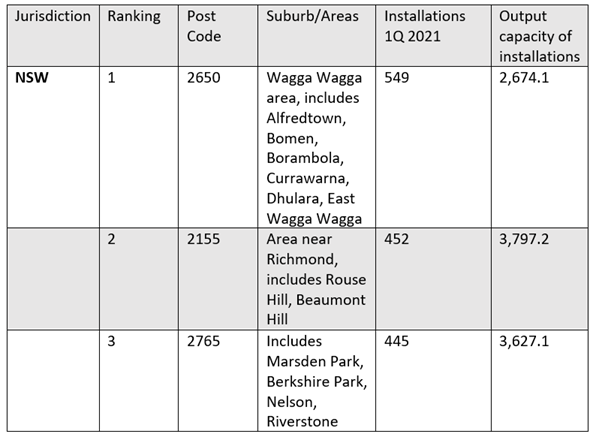
Table 3: Top post codes Q1 2021, Queensland

Table 4: Top post codes Q1 2021, Victoria
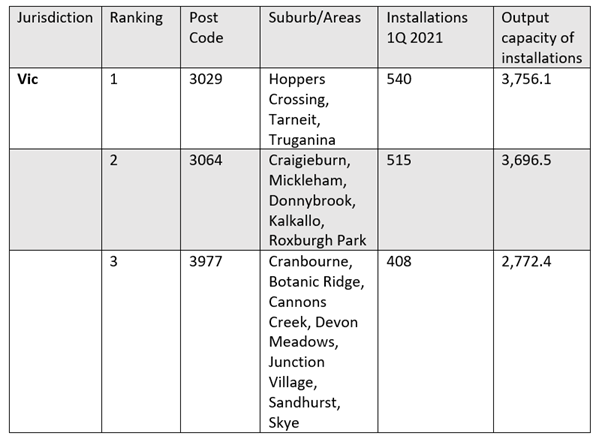
Table 5: Top three post codes, South Australia
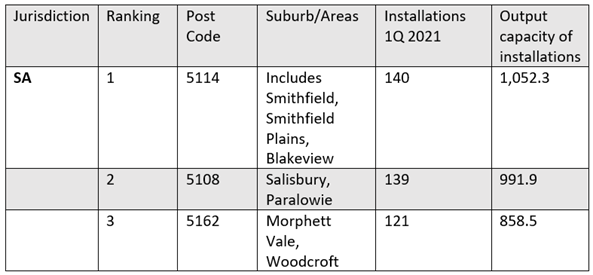
Table 6: Top post codes Q1 2021, ACT
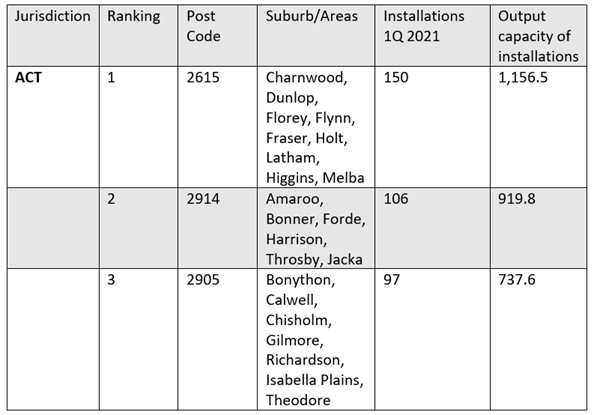
Table 7: Top post codes Q1 2021, Tasmania

Table 8: Top post codes Q1 2021, Western Australia
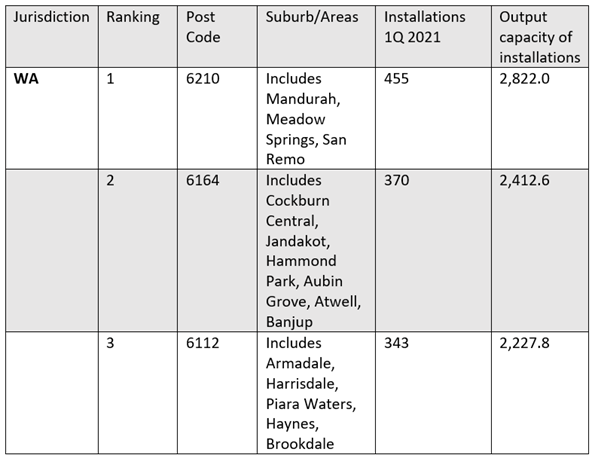
Table 9: Top post codes Q1 2021, Northern Territory
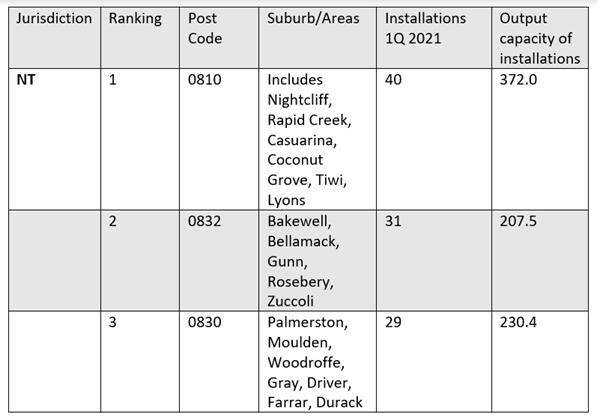
By state, New South Wales has led the annual level of solar installations, followed by Queensland. Queensland previously set the pace for solar system installations prior to 2018.
Last year New South Wales installations reached 109,627, while Queensland rooftops were home to 87,469 new PV systems.
A total of 365,740 systems were installed in 2020, while this year 75,669 systems had been installed in the first quarter (the number of installations by state for 2020 and in the first quarter are shown in table 10). This took the national total to 2.76 million systems with a rated total output of 13,861 MW since 2001
Table 10: Total installations by state and territory, 2001- Q1 2021
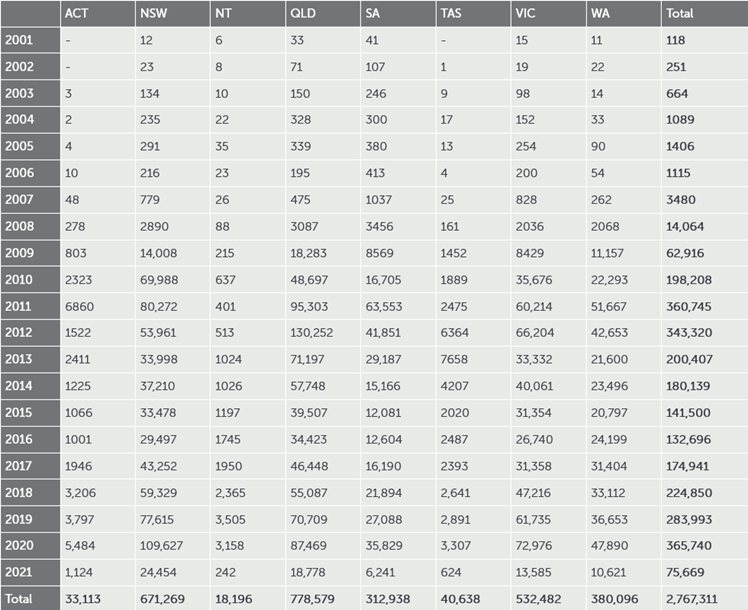
Source: Clean Energy Regulator
[i] 2001-End of March 2021
Related Analysis
Nuclear Fusion Deals – Based on reality or a dream?
Last week, Italian energy company ENI announced a $1 billion (USD) purchase of electricity from U.S.-based Commonwealth Fusion Systems (CFS), described as the world’s leading commercial fusion energy company and backed by Bill Gates’ Breakthrough Energy Ventures. CFS plans to start building its Arc facility in 2027–28, targeting electricity supply to the grid in the early 2030s. Earlier this year, Google also signed a commercial agreement with CFS. These are considered the world’s first commercial fusion-power deals. While they offer optimism for fusion as a clean, abundant energy source, they also recall decades of “breakthrough” announcements that have yet to deliver practical, grid-ready power. The key question remains: how close is fusion to being not only proven, but scalable and commercially viable, and which projects worldwide are shaping its future?
Community Power Network Trial: Potential risks and market impact
Australia leads the world in rooftop solar, yet renters, apartment dwellers and low-income households remain excluded from many of the benefits. Ausgrid’s proposed Community Power Network trial seeks to address this gap by installing and operating shared solar and batteries, with returns redistributed to local customers. While the model could broaden access, it also challenges the long-standing separation between monopoly networks and contestable markets, raising questions about precedent, competitive neutrality, cross-subsidies, and the potential for market distortion. We take a look at the trial’s design, its domestic and international precedents, associated risks and considerations, and the broader implications for the energy market.
Competition a key to VPP development: ACCC report
The Australian Competition and Consumer Commission’s most recent report on the electricity market provides good insights into the extent of emerging energy services such as virtual power plants (VPPs), electric vehicle tariffs and behavioural demand response programs. As highlighted by the focus in the ACCC’s report, retailers are actively engaging in innovation and new energy services, such as VPPs. Here we look at what the report found in relation to the emergence of VPPs, which are expected to play an important and growing role in the grid as more homes install solar with battery storage, the benefits that can accrue to customers, as well as potential areas for considerations to support this emerging new market.
Send an email with your question or comment, and include your name and a short message and we'll get back to you shortly.


